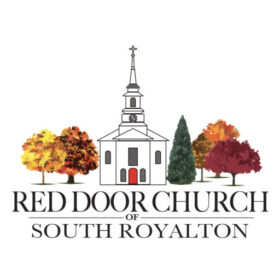At Red Door Church we’ve been taking a look at the Church of Jesus Christ of Latter-Day Saints (LDS). Along the way, we’ve noticed that Joseph Smith quotes directly from the King James Bible (KJV) or paraphrases it in a handful of places in the Book of Mormon (which was allegedly revealed to him by the angel Moroni).
This is a big problem for the Book of Mormon.
The point of this short entry is to cast doubt upon the legitimacy of the BOM (Book of Mormon). If quotations from a book written some one-thousand years after the BOM’s first edition somehow find their way into the BOM itself, then we have virtually undeniable evidence that the BOM is not in fact the book the LDS church claims it to be.
BOM Plagiarisms From the KJV
On the plagiarisms from the King James Bible, cult expert Walter Martin writes:
“A careful examination of The Book of Mormon reveals that it contains thousands of words from the King James Bible. In fact, verbatim quotations, some of considerable length [can be found there]. The comparisons of Moroni 10 with 1 Corinthians 12:1-11; Nephi 114 with Isaiah 4; and 2 Nephi 12 with Isaiah 2 reveal that Joseph Smith made free use of his Bible to supplement the alleged revelation of the golden plates. The book of Mosiah, chapter 14, in The Book of Mormon, is a reproduction of the fifty-third chapter of Isaiah the prophet, and 3 Nephi 13 copies Matthew 6 almost word-for-word.” 1
While to some this may not seem like a big deal, The Book of Mormon (BOM) claims that the golden plates which are the text from which the BOM is translated, were engraved by two prophet-historians, Mormon and his son Moroni, in the year 400. But the King James Bible didn’t arrive on the scene until 1611. So if the alleged dates for the BOM are accurate how did the plagiarisms occur? 2
King James Version Errors
What is more, the BOM quotes sections of the KJV which scholars now know to contain errors. Jeremy Runnells, a formerly committed Mormon and BYU grad, in his now famous “Letter to a CES Director”, asks at the very beginning of his paper:
“What are 1769 King James Version edition errors doing in the Book of Mormon? An ancient text? Errors which are unique to the 1769 edition that Joseph Smith owned?” 3
One of the more famous KJV errors worth mentioning here that makes its way into the BOM is 1 John 5:7-8. (This error is found in all editions of the KJV, including the first completed in 1611.) Scholarly consensus is now overwhelming that this passage is a Latin corruption that migrated into the Greek manuscript tradition in later editions. Bruce Metzger writes about manuscript 61, the first Greek manuscript discovered which contains this passage:
“The manuscript [dating from the late 15th or early 16th century], which is remarkably fresh and clean throughout (except for the two pages containing 1 John 5, which are soiled from repeated examination of this passage), gives every appearance of having been produced expressly for the purpose of confuting Erasmus.” 4
Another Greek expert and conservative bible scholar, Daniel B. Wallace tells the story of how this interpolation happened:
“[T]he Greek text which stands behind the King James Bible is demonstrably inferior in certain places. The man who edited the text was a Roman Catholic priest and humanist named Erasmus. He was under pressure to get it to the press as soon as possible since (a) no edition of the Greek New Testament had yet been published, and (b) he had heard that Cardinal Ximenes and his associates were just about to publish an edition of the Greek New Testament and he was in a race to beat them. Consequently, his edition has been called the most poorly edited volume in all of literature! It is filled with hundreds of typographical errors which even Erasmus would acknowledge. Two places deserve special mention. In the last six verses of Revelation, Erasmus had no Greek manuscript (=MS) (he only used half a dozen, very late MSS for the whole New Testament any way). He was therefore forced to ‘back-translate’ the Latin into Greek and by so doing he created seventeen variants which have never been found in any other Greek MS of Revelation! He merely guessed at what the Greek might have been. Secondly, for 1 John 5:7-8, Erasmus followed the majority of MSS in reading “there are three witnesses in heaven, the Spirit and the water and the blood.” However, there was an uproar in some Roman Catholic circles because his text did not read ‘there are three witnesses in heaven, the Father, the Word, and the Holy Spirit.’ Erasmus said that he did not put that in the text because he found no Greek MSS which had that reading. This implicit challenge—viz., that if he found such a reading in any Greek MS, he would put it in his text—did not go unnoticed. In 1520, a scribe at Oxford named Roy made such a Greek MS (codex 61, now in Dublin). Erasmus’ third edition had the second reading because such a Greek MS was ‘made to order’ to fill the challenge! To date, only a handful of Greek MSS have been discovered which have the Trinitarian formula in 1 John 5:7-8, though none of them is demonstrably earlier than the sixteenth century.” 5
The spurious passage from the KJV can be found paraphrased in 3 Nephi 11:27 (BOM):
“And after this manner shall ye baptize in my name; for behold, verily I say unto to you, that the Father, and the Son, and the Holy Ghost are one; and I am in the Father, and the Father in me, and the Father and I are one.”
The bolded phrase above is quoted almost verbatim from 1 John 5:7, a phrase which cannot be found anywhere else in the New Testament. Coincidence? It appears that Joseph Smith paraphrased the interpolation from the KJV into the BOM not knowing the difference. 6
Runnells provides various other places where KJV errors make their way into the BOM. You can download the PDF of “Letter to a CES Director” here and see them for yourself.
What’s the Point?
I have in my lap The Book of Mormon. In the very front it says this:
“The Book of Mormon: An account written by the hand of Mormon upon plates taken from the plates of Nephi… Translated by Joseph Smith, Jun.”
What we have seen, however, casts serious doubt that the BOM is in fact what it’s opening pages claim. There seems to be no way around the conclusion that Joseph Smith used the KJV Bible as original source material for parts of the BOM, and not some alleged “golden plates” (or visions) which were revealed to him and later translated.
- Walter Martin, The Kingdom of the Cults: The Definitive Work on the Subject (Bethany House Publishers), ↵
- The assumption here, of course, is that Joseph Smith simply copied or paraphrased these parts of the BOM directly from the King James Bible and did not in fact translate them from any alleged golden plates. ↵
- Jeremy T. Runnells, “Letter to a CES Director.” Accessed on 6/23/15. Please see Creative Commons License. ↵
- Bruce M. Metzger, “The Text of the New Testament, ” 3rd Ed. (Oxford: Oxford University Press, 1992), 62. ↵
- “Why I Do Not Think the King James Bible is the Best Translation Available Today.” Accessed on 6/23/15. Can be found at https://bible.org/article/why-i-do-not-think-king-james-bible-best-translation-available-today. ↵
- Christians of course would affirm the truthfulness of the statement, that the Father, the Son and the Holy Spirit are one. But it would be wrong to assume that our affirmation of this truth is dependant upon this single passage. In the words of James R. White “We are in no way dependant upon the phrase for our knowledge of the Trinity or the unity of the three Persons: Father, Son and Spirit. The doctrine of the Trinity does not stand or fall upon the inclusion of the Comma. Beyond this, however, we have a phrase that is simply not a part of the ancient Greek manuscripts of John’s first epistle.” Quoted from his book “The King James Only Controversy: Can You Trust the Modern Translations?” (Minneapolis, MN: Bethany House, 1995), 61. ↵



